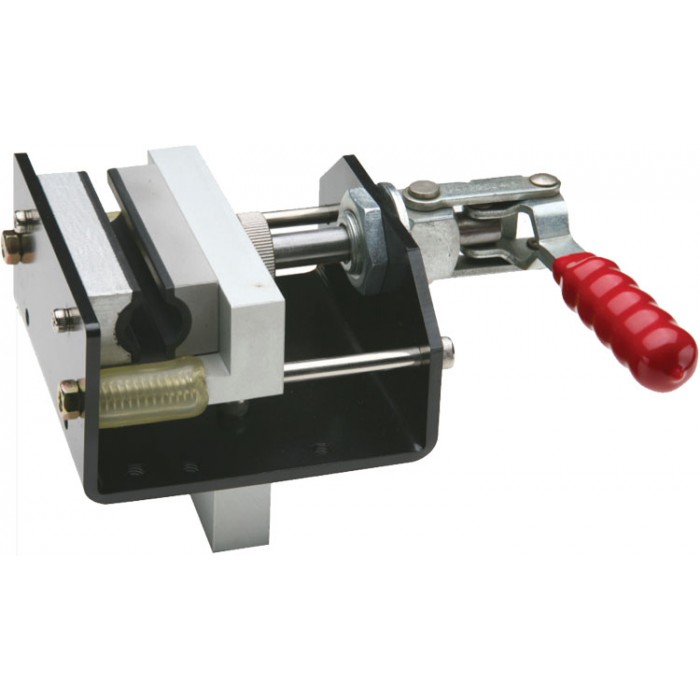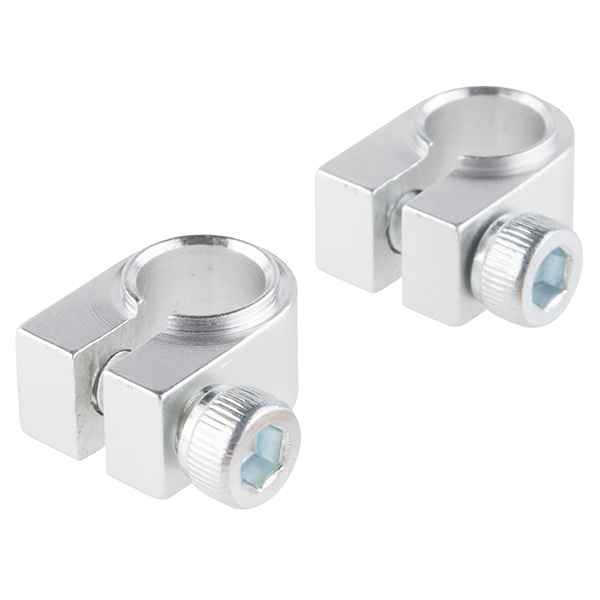
What are the temperature and corrosion resistance properties of shaft clamps?
When it comes to the temperature and corrosion resistance properties of shaft clamps, here’s a detailed explanation:
Temperature Resistance:
Shaft clamps are designed to operate within specific temperature ranges based on the materials used in their construction. The temperature resistance properties of shaft clamps depend on the materials’ thermal stability and their ability to withstand temperature variations without significant deformation or loss of functionality.
Common materials used in shaft clamps with good temperature resistance include:
- Stainless Steel: Stainless steel shaft clamps offer excellent resistance to high temperatures, typically up to 800°C (1472°F). They maintain their mechanical strength and structural integrity even at elevated temperatures. Different grades of stainless steel may have varying temperature limits, so it’s important to refer to the manufacturer’s specifications.
- Alloy Steel: Alloy steel shaft clamps can withstand high temperatures, typically up to 500°C (932°F) or higher, depending on the specific alloy composition. These clamps offer good mechanical properties and are commonly used in applications where high-temperature resistance is required.
- Specialized Alloys: Some shaft clamps are made from specialized alloys designed to withstand extremely high temperatures. These alloys, such as Inconel or Hastelloy, exhibit exceptional heat resistance and can operate in temperature ranges exceeding 1000°C (1832°F).
Corrosion Resistance:
Corrosion resistance is an important property for shaft clamps, especially in applications where they may be exposed to moisture, chemicals, or harsh environments. The corrosion resistance properties of shaft clamps depend on the materials used and any additional protective coatings or treatments applied.
Here are some materials commonly used in shaft clamps with good corrosion resistance:
- Stainless Steel: Stainless steel shaft clamps are known for their excellent corrosion resistance. They resist oxidation, rust, and most chemicals, making them suitable for a wide range of applications in various environments.
- Aluminum: Aluminum shaft clamps offer good corrosion resistance due to the formation of a protective oxide layer on the surface. However, they may not be suitable for highly corrosive environments or applications involving certain chemicals.
- Coated or Treated Materials: Some shaft clamps are coated or treated with corrosion-resistant materials or coatings, such as zinc plating, epoxy coatings, or specialized polymer coatings. These additional protective layers enhance the clamp’s resistance to corrosion and extend its lifespan in challenging environments.
It’s important to note that the temperature and corrosion resistance properties of shaft clamps can vary depending on the specific materials, manufacturing processes, and coatings used. It’s recommended to refer to the manufacturer’s specifications and consult with suppliers or industry professionals to ensure that the shaft clamps you choose meet the required temperature and corrosion resistance requirements for your specific application.

Can I find guidelines on lubricating and maintaining shaft clamps for optimal performance?
Yes, guidelines for lubricating and maintaining shaft clamps can be found to ensure optimal performance. Here’s a detailed explanation:
When it comes to lubricating and maintaining shaft clamps, it’s important to refer to the manufacturer’s guidelines and recommendations specific to the type of clamp being used. These guidelines may vary depending on the design, materials, and intended application of the shaft clamp. However, here are some general considerations:
1. Lubrication:
Some shaft clamps may require lubrication to reduce friction and ensure smooth operation. The type of lubricant and the frequency of lubrication will depend on the specific clamp design and the environmental conditions in which it operates. It’s important to use lubricants that are compatible with the materials of the clamp and the shaft to avoid degradation or damage. The manufacturer’s guidelines will provide specific recommendations on the appropriate lubrication method and lubricant type.
2. Inspection and Cleaning:
Regular inspection and cleaning of the shaft clamps are essential for maintaining optimal performance. Inspect the clamps for any signs of wear, damage, or misalignment. Clean the clamps to remove any dirt, debris, or contaminants that may affect their operation. Use appropriate cleaning methods and avoid using harsh chemicals that could damage the clamp or its surface finish.
3. Torque Checks:
Over time, the clamping force of the shaft clamp may diminish due to factors such as vibration or thermal expansion. It’s important to periodically check and verify the torque settings of the clamp to ensure that it maintains the desired clamping force. This can be done using torque wrenches or other suitable torque measurement tools as specified by the manufacturer.
4. Environmental Considerations:
Consider the operating environment of the shaft clamp when determining the maintenance requirements. In harsh or corrosive environments, additional protective measures may be necessary to prevent corrosion or deterioration of the clamp. This can include applying protective coatings or using corrosion-resistant materials.
5. Replacement and Spare Parts:
If a shaft clamp shows signs of significant wear or damage that cannot be remedied through maintenance, it may be necessary to replace the clamp. Ensure that replacement clamps or spare parts are obtained from reputable sources and are compatible with the specific clamp design.
It’s important to note that these are general considerations, and the specific maintenance requirements for shaft clamps may vary. Always consult the manufacturer’s guidelines and recommendations for the particular make and model of the shaft clamp to ensure proper lubrication and maintenance practices are followed. Adhering to these guidelines will help optimize the performance, longevity, and reliability of the shaft clamps in your machinery.

What are the key features to consider when selecting a shaft clamp for a specific application?
When selecting a shaft clamp for a specific application, several key features should be taken into consideration. These features will help ensure that the chosen shaft clamp is suitable for the intended use and provides optimal performance. Here are the key features to consider:
- Shaft Diameter: The shaft clamp must be compatible with the diameter of the shaft it will be installed on. Measure the diameter of the shaft accurately and choose a shaft clamp that matches or has an adjustable range to accommodate the specific shaft size.
- Material: Consider the material of the shaft clamp, as it can impact factors such as strength, corrosion resistance, and temperature tolerance. Common materials for shaft clamps include steel, stainless steel, aluminum, and plastic. Select a material that suits the environmental conditions and requirements of the application.
- Clamping Mechanism: Evaluate the clamping mechanism used in the shaft clamp. Common types include screw-based mechanisms, lever-operated mechanisms, or cam-style mechanisms. Consider the ease of installation, adjustment, and the level of grip provided by the clamping mechanism.
- Load Capacity: Determine the expected load or torque that the shaft clamp will need to withstand. Check the manufacturer’s specifications to ensure that the chosen shaft clamp can handle the anticipated loads without compromising performance or safety.
- Application Environment: Assess the environmental conditions in which the shaft clamp will be used. Factors such as temperature extremes, humidity, exposure to chemicals, or abrasive particles can affect the performance and durability of the shaft clamp. Choose a shaft clamp that is designed to withstand the specific environmental challenges of the application.
- Certifications and Compliance: In certain industries or applications, specific certifications or compliance with standards may be required. Examples include ISO certifications, FDA compliance for food-related applications, or industry-specific quality management system certifications. Verify that the shaft clamp meets the necessary certifications or standards for your application.
- Installation and Maintenance: Consider the ease of installation and maintenance of the shaft clamp. Look for features such as tool-less installation, accessible adjustment mechanisms, or provisions for lubrication if required. A shaft clamp that is easy to install and maintain can save time and effort in the long run.
- Compatibility with Components: Ensure that the shaft clamp is compatible with the components that need to be secured onto the shaft. Consider factors such as the shape, size, and attachment requirements of the components. The shaft clamp should provide a secure and stable connection without interfering with the functionality of the attached components.
By considering these key features, you can select a shaft clamp that is well-suited for your specific application, providing reliable and efficient performance. It is recommended to consult with manufacturers, suppliers, or industry experts for further guidance and to ensure the most appropriate choice for your specific requirements.


editor by CX 2024-03-29